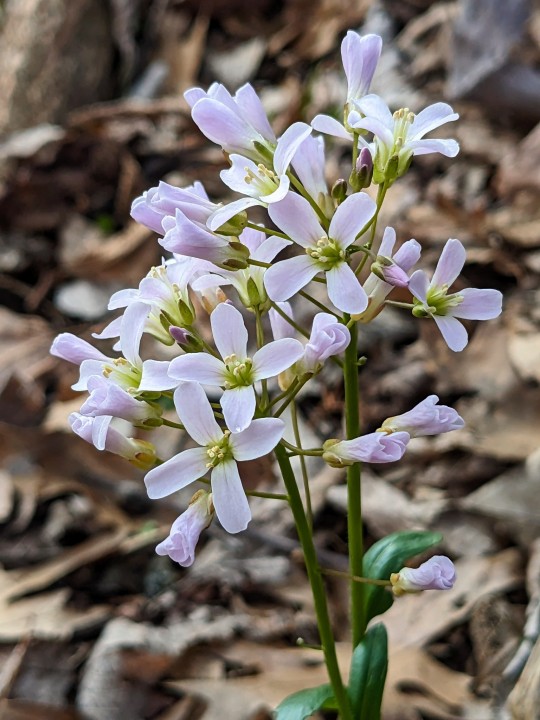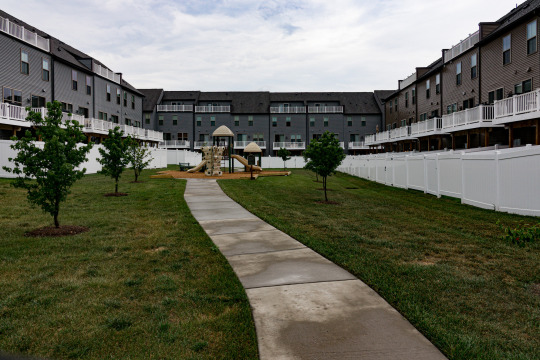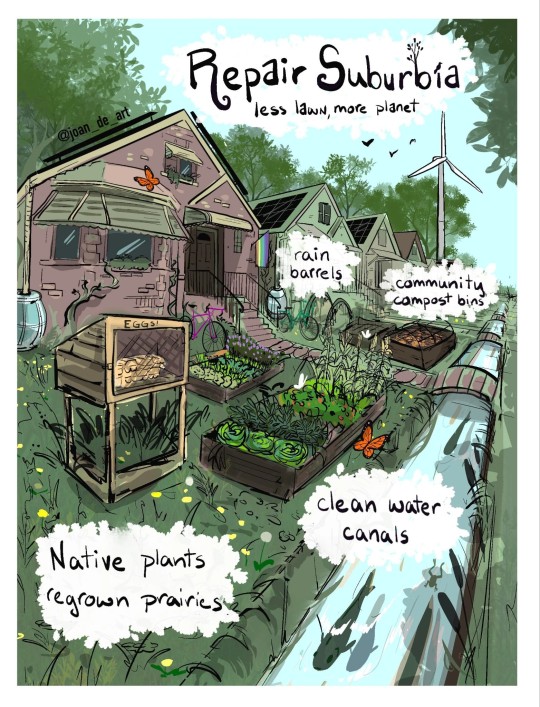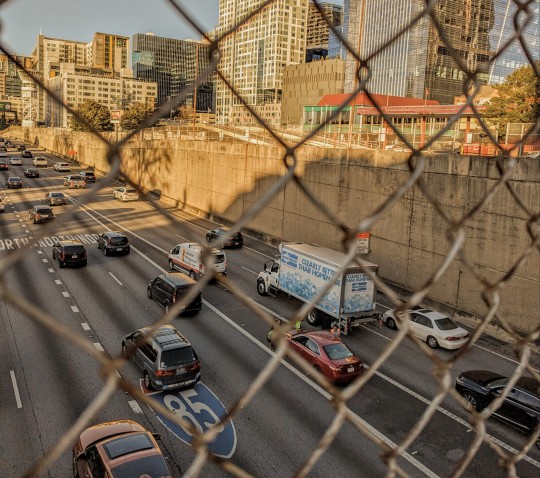#suburban sprawl
Explore tagged Tumblr posts
Text
I have a kind of love for where I live but that doesn't not mean it's a good place to live. There's nothing to do, it's full of construction of new single family homes!!! Occasional mini malls that contain a mattress store, dentists office, nail salon, and some kind of fast food. It felt less sucky growing up.
Remember, you are under no obligation to divulge your location in the notes or comments and, actually, doing so could endanger your personal safety.
That said, CHICAGO, LET'S GOOOOOOOOOOOOOOOOOOOOOOOOOOOOOOOOOOOOOOOOOO!
#AAAAAAAAAA#walkable cities#this is not one of those#urbanism#urban sprawl#suburbia#suburban sprawl#wish i could dox myself just to get some people who share my opinions
4K notes
·
View notes
Text


Purple Cress
Cardamine douglassii
Also known as Limestone Cress, this species in the mustard family features clusters of light purple flowers in early spring and can be found in wet and swampy forests with calcium carbonate rich soils. It's native to parts of the eastern United States and southern Ontario, Canada.
The plants I photographed are part of an isolated population remaining in a tiny bottomland forest remnant in St. Charles County, Missouri. Unfortunately, the rest of the forest has been lost due to suburban sprawl and what little of it remains has many invasive species, including winter creeper, callery pear, and japanese honeysuckle trying to encroach from surrounding developments and outcompete native plants like this one.
March 12th & 13th, 2024
St. Charles County, Missouri, USA
Olivia R. Myers
@oliviarosaline
#botany#cardamine douglassii#cardamine#purple cress#bittercress#brassicaceae#nature#naturecore#forest#fairycore#woods#missouri#native plants#native flowers#forests#hiking missouri#suburban sprawl#urban sprawl#ecology#plants#flowers#wildflowers#purple flowers#native plants of america#forest floor#bottomland woods#bottomland forests#nature photography#flower photography#spring
37 notes
·
View notes
Text

new townhouses, Sterling, Virginia
Most internet traffic in the world passes through Loudon County, Virginia. What was once was farmland and forests surrounding Dulles Airport has recently been transformmed into data centers and cloud storage. Just outside of the airport noise restriction zone new condos, townhouses, and apartments are interspersed between the huge data centers. This link can give you an idea what it looks like from space: https://www.google.com/maps/place/Sterling,+VA/@38.9907809,-77.4400435,3810m/data=!3m1!1e3!4m6!3m5!1s0x89b6384f20fb61ad:0x5bfd0cf0a55864c!8m2!3d39.0066993!4d-77.4291298!16zL20vMDNzd2d0?entry=ttu
photo: David Castenson
102 notes
·
View notes
Text
this image popped up again:

and it made me think. about stuff
i think this image feels so right because the majority of color is sorts of greens & co instead of one single type of blue
it shows a good thing that's missing from lots of suburban sprawl (at least near me in America), that being the inhibition of reverse-claustrophobia
cuz like in urban places, there are more tall things, but in suburbia there's way too much sky for my liking; at night the stars are so cool dont get me wrong !! but during the day the sky is like too much— I see too much of the horizon & faraway things when i should be within a nice safe clearing surrounded by forestry of all (non-invasive) kinds, cradled in the arms of mother nature
yknow?
#oo also where i live its soso flat & boring#i want billowing hills I want the scottish Highlands or the Himalayas or even just a nook by the creek#i suppose it all comes back to vertical texture frfr#solar punk#suburban sprawl#ok i know i cant have all of the Himalayas to myself; i just listed the first thingies i thought of
26 notes
·
View notes
Text
We've known that car-centric urban design was a climate killer for decades. Can we finally act?
Darin Givens | July, 2023

Monday was Earth’s hottest day in at least 125,000 years. Tuesday was hotter.
Many factors contributed to this, one being car-oriented sprawl. Even though this is something we’ve known for decades, we’ve largely failed to treat urban design as the climate-action tool it is.
That needs to change, and following through on that change will require acknowledging our past mistakes.
I’ve received comments over the years from people who were city leaders and planners in previous decades, arguing that the decision to treat car-centric sprawl as a fine option for our urbanism was a perfectly understandable thing at the time.
They’ve argued that car-centric placemaking, and low population densities in the city, were OK things to accept because they were a ‘preference’ & many cities did the same.
I call BS.
Rachel Carson’s Silent Spring existed. Emissions from cars were a known problem long ago.
The triggers of highway-driven sprawl were obviously racism and classism to anyone who cared to spend a sober few minutes thinking about it.
Were cities in decline? Yes. But were they fixable 50 years ago? Yes. Jane Jacobs, William H. Whyte, & more had written the solutions.
I’m not saying this just to shame the leaders of the past. This is a call to recognize how serious our mistakes were in our urbanism, how heavily those mistakes are connected to the carbon emissions that have contributed to the climate crisis, and how crucial urbanism is now.
Leaders have all the info they need to craft an urban design that addresses the climate crisis. Data on the lower carbon footprints of compact places is easily available.
Every decision that affects our built environment matters a great deal. The big ones & small ones.
76 notes
·
View notes
Text

#photography#art#hipster#polaroid#california#film#photo#color#analog#nature#suburban sprawl#suburbs#mall#shopping mall
4 notes
·
View notes
Text

6 notes
·
View notes
Text
youtube
#my greens#many urbanists are posting the same things but trhis one sums up everything well and is from this yr#urbanism#suburban sprawl#car centric infrastructure#cars#cities#pollution#displacement#racism#classism#video#ubran planning#transit#public transit#car transit#infrastructure#city infrastructure#suburban experiment
3 notes
·
View notes
Text

6 notes
·
View notes
Text
🎧
1 note
·
View note
Text

0 notes
Text
The 9th layer of hell is modelled after the suburbs actually
0 notes
Text
They're not exactly defunding the Interstate Highway System (or your local equivalent!)
The grocery shopping argument is one that comes up a lot, and it's important to note that our current North American style of shopping is something that's relatively very, very new, historically.
It required the creation of:
Supply lines to get out-of-season fruits and vegetables year-round, usually by putting plantations in poorer countries, so that usually involved some forceful diplomacy and suppression of unions, higher pay, etc.
Long-distance refrigerated shipping, by ship, trains, trucks, and air
Infrastructure to flash-freeze produce for shipping at point of departure (fish, for instance)
Refrigerated warehouses at transfer hubs / purveyors
The modern supermarket as an "efficient" self-serve market, vs the traditional market with lots of departments, staff, and everything is behind the counter
The idea of branded, packaged consumer products, made to consistent standards, in factories, available nationally, shelf-stable for months or years (a spinoff of military MREs, tbh), vs. homemade, locally made or store-made items
Suburban sprawl and single-use zoning policies so that small neighborhood grocers and convenience stores mixed in with residential areas become illegal overnight - maybe not by design, but that's the unintended outcome.
Home refrigeration, freezers, and/or air conditioning so that produce doesn't spoil within hours or days, and the space / electricity to power them.
Almost none of this was universal until well after World War II.
If you are lucky enough to live in an older city - to go for the cliché, let's say Paris, but in North American terms: NYC, Montreal, Boston, Philadelphia - that was built pre-automobile / during the streetcar era, you're likely have at least some small independent grocers, wine shops, bakeries etc within walking distance. Or if you're very lucky, a farmer's market maybe a short transit ride away.
Your apartment may be small, with a small kitchen, and at most a small refrigerator (maybe without a freezer!) - maybe tops, an undercounter model.
In that case, you're not going to Costco to buy a Prepper Pallet of 1000 cans of beans, or to meal prep for weeks in advance, you're buying some staples and then fresh food for that day's meal, maybe with enough to have some leftovers, but that's it. You may not have space to do the meal prep and no appliances to freeze anything!
(There's a whole side track we could get into about whose job it is to do all the shopping every day and how modern double-income households are even more pressed for time, but I digress.)
In those traditional older neighborhoods, it's relatively easy to do your grocery shopping without a car because you're not hauling that much stuff to begin with, and not as far. You can easily do it on a bike or with a "grandma" rolling cart.
So walkability / accessibility means having shops and services close by. And maybe in the planning / retrofitting of walkable neighborhoods, not only should space be left for them, but perhaps these essential stores could be community-owned and run as nonprofit coops!), giving everyone input into what sort of stuff they like, and to keep prices stable.
okay so obviously walkable cities are great and all, i think making cities more car-hostile is probably net-positive, but its weird when people act like this is a policy without significant tradeoffs? like, i lived in a city without a car for several years and just walked to class and it was kinda nice but also yknow. it meant i couldnt really...leave the city? like not needing a car is great but not having a car sucks. also getting groceries without a car suuuucks.
#urbanism#walkability#shops and services#groceries#suburban sprawl#this is a LOCAL shop for LOCAL people
383 notes
·
View notes
Text


Barrett Pkwy, Cobb County. I grew up nearby & worked at Town Center Mall for a couple of years. I also got to see this land when it was still fields & forests, before the commercial development came.
We have to see this development style as a mistake. As a wound on the land. I truly believe that's a necessary step in working toward a less car-dependent style of development even in the suburbs.
15 notes
·
View notes
